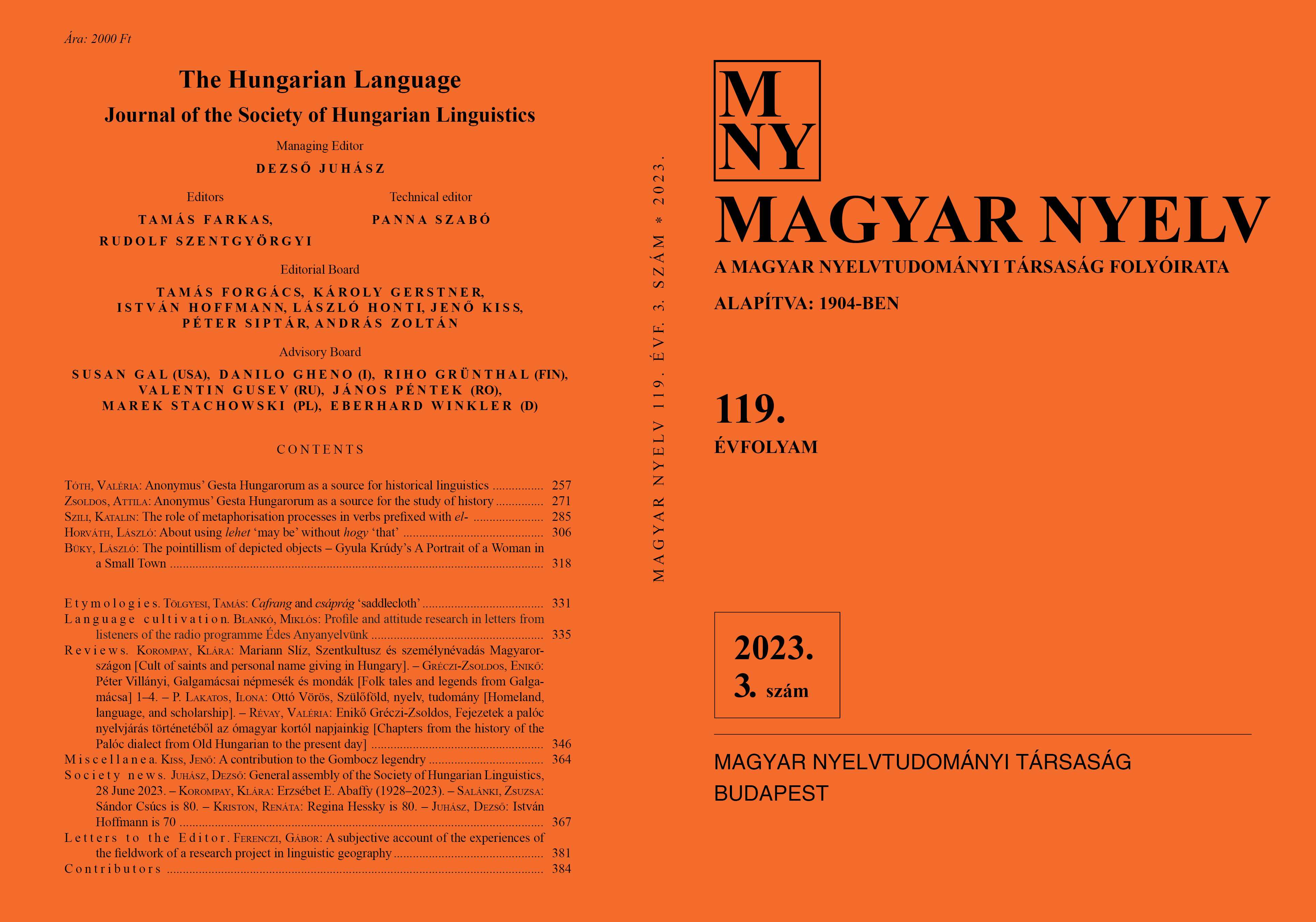The pointillism of depicted objects – Gyula Krúdy’s A Portrait of a Woman in a Small Town
DOI:
https://doi.org/10.18349/MagyarNyelv.2023.3.318Keywords:
Gyula Krúdy, Georges Seurat, Pointillism, depicted objects, coherence, cohesionAbstract
Krúdy’s prose is usually tied to Impressionism by research, and this is evidenced mostly by his grammatical features and word inventions. This study, however, presents the application of the technique of Pointillism (also known as Divisionism) known from painting in one of the writer's short stories in Sindbad. The text points highlighted from the short story are elements of the depicted objects, based on which the text sentences provide the intellectual continuity (coherence) of the short. Each of the main topic groups of the text – e. g. location(s), travel, social group(s) of men and women, their attire, etc. – show smaller components of the whole picture that the writer presents to the reader with the title of the story as a subject mark.
Downloads
Published
Issue
Section
License
Copyright (c) 2023 László Büky

This work is licensed under a Creative Commons Attribution-NonCommercial-NoDerivatives 4.0 International License.
Magyar Nyelv is a Diamond Open Access periodical. Documents can be freely downloaded and duplicated in an electronic format, and can be used unchanged and with due reference to the original source. Such use must not serve commercial purposes. In the case of any form of dissemination and use, Hungarian Copyright Act LXXVI/1999 and related laws are to be observed. The electronic version of the journal is subject to the regulations of CC BY-NC-ND (Creative Commons – Attribution-NonCommercial-NoDerivatives).
The journal permits its authors, at no cost and without any temporal limitation, to make pre-print copies of their manuscripts publicly available via email or in their own homepage or that of their institution, or in either closed or free-for-all repositories of their institutions/universities, or other non-profit websites, in the form accepted by the journal editor for publication and even containing amendments on the basis of reviewers’ comments. When the authors publicize their papers in this manner, they have to warn their readers that the manuscript at hand is not the final published version of the work. Once the paper has been published in a printed or online form, the authors are allowed (and advised) to use that (post-print) version for the above purposes. In that case, they have to indicate the exact location and other data of the journal publication. The authors retain the copyright of their papers; however, in the case of an occasional secondary publication, the bibliographical data of the first publication have to be included.



